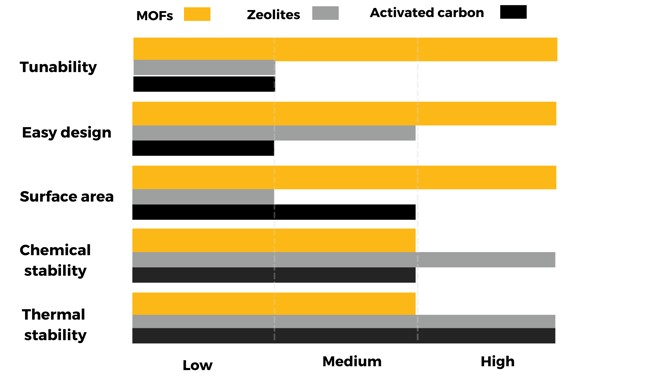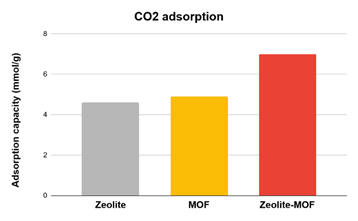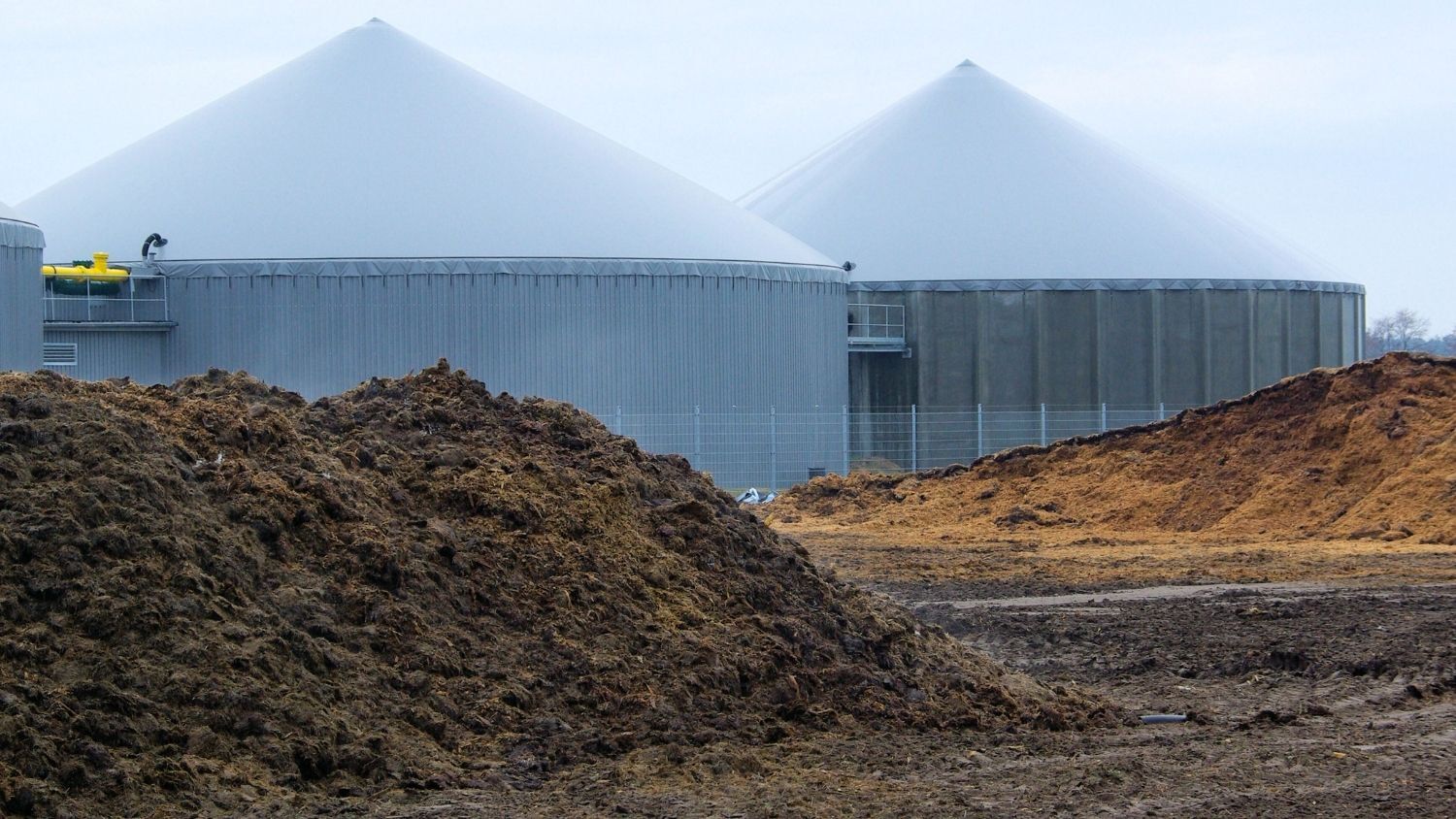Porous materials such as zeolites, activated carbons and MOFs are of great interest in many areas of industrial applications such as gas storage, fine chemical synthesis, energy storage, amongst others. However, each material has its advantages and weaknesses when applied in industrial processes. In recent progress in porous materials, a tuned combination can help exploit the best of each material, improving the performance within the designated application. In this blog, we describe some combinations as an example of this approach.
Overview of porous materials
Zeolites are naturally occurring materials consisting of aluminosilicates. However, they can also be synthesized for industrial applications. Zeolites possess a microporous structure with charged species; this characteristic is used to adsorb and desorb molecules for different purposes. The pore size of zeolites varies from 4-7 Å (for comparison water molecule has a size of 2.75 Å). Their high thermochemical stability is one of their most appealing properties, and they are used often for processes related to high temperatures.
Activated carbon is one of the most used materials for adsorption processes obtained from natural waste such as cellulosic materials or pyrolysis of coconut shells. Besides its large surface area and reactivity, the abundance of this material and its low cost are key factors for the application at the industrial scale. Despite this, its capability is limited due to the lack of specificity in the adsorption process.
-Dec-22-2021-06-38-25-40-PM.png?width=760&name=Untitled%20design%20(5)-Dec-22-2021-06-38-25-40-PM.png)
Metal-Organic Frameworks (MOFs) are the most recent materials developed among porous adsorbents. They are hybrid materials consisting of a metal center bounded by organic ligands. MOFs possess ultra-high surface area, allowing for record-breaking adsorption capacities. They also enable the possibility of fine-tuning the surface chemistry and allow control over the pore size, increasing the selectivity of MOFs in adsorption processes. The downside for these materials is that their performance is limited in the presence of high thermal and chemical stresses.

New possibilities with MOFs
Over the past few years, numerous reports about MOFs have been published, and this is because these hybrid materials offer limitless opportunities to create new materials every time. As hybrid materials, MOFs are the only porous material combining the advantages of the organic chemistry disciplines and the inorganic disciplines, breaking the century-long segregation of these two chemistry disciplines. Metal centers and ligands can be exchanged according to the target application. In principle, the entire table of elements can be employed to create new MOF structures. The level of manipulation during the synthesis of MOFs is superior to that found in zeolites and activated carbon.
Another feature of MOFs is the ability to control the pore size of the final structure. Pore size is critical for separation processes, resulting in superior performance than materials based on zeolites and activated carbon. Pore size of MOFs range from microporosity with roughly 1 Å ( for gas molecules such as hydrogen) up to macroporosity up to 97 Å (for biomolecules such as proteins.
Why use a combination of materials?
Owing to the weaknesses described by the different materials, their combination has been explored to improve the performance of a single material. For instance, MOFs can be used in composite or membrane form with zeolites and porous carbon. One of the simplest methods to combine them is through the fabrication of mixed matrix membranes (MMMs). MMMs consist of a polymer combined with a solid porous filler; they aim to keep the flexibility of the polymer while retaining filtration capacity.
 Although extensive work is dedicated to developing zeolites and activated carbon MMMs, the resulting systems present limitations. Zeolite-based MMMs show poor separation capacity due to defective interfaces between the zeolite and the polymer. Activated carbon-based MMMs show better results than zeolites but lack long-term stability.
Although extensive work is dedicated to developing zeolites and activated carbon MMMs, the resulting systems present limitations. Zeolite-based MMMs show poor separation capacity due to defective interfaces between the zeolite and the polymer. Activated carbon-based MMMs show better results than zeolites but lack long-term stability.
Recent work shows that the combination of zeolite and MOFs in composite materials for gas adsorption is a viable option to increase the performance of the separation step. When the zeolite and MOF are used alone, they have a similar adsorption capacity while the combination of both materials enhances the performance up to 40% (from 4.6-4.9 to over 7 mmol of CO2/g).
When combining porous materials, there are different factors to consider for a successful result. Material compatibility is key to avoid interfacial issues, leading to quick failure of the composite or MMM. At novoMOF, we can help you select the right MOF for the desired application and give you advice about compatibility with other materials.
If you want to know more about this approach, visit our success stories about the porous material combination.




.jpg)
